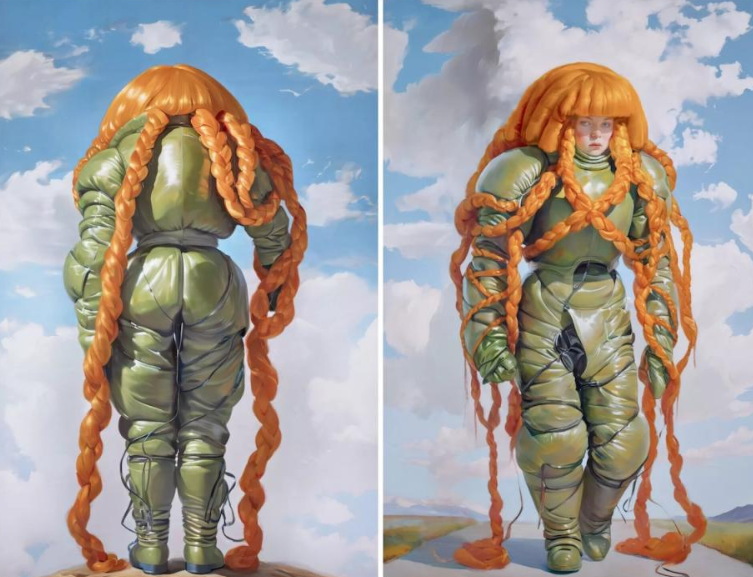Nearly 4,000 people have signed an open letter urging Christie’s New York to cancel an upcoming auction focused exclusively on art created using artificial intelligence (AI). This auction is set to be the first of its kind for a major auction house. The petition highlights concerns that the AI programs used to generate some of the digital art have been trained on copyrighted material, potentially exploiting human artists in the process.
The letter began circulating on Saturday, just one day after the announcement of Christie’s “Augmented Intelligence” sale. The auction, which is expected to generate over $600,000, features works by artists such as Refik Anadol, Harold Cohen, Holly Herndon, Mat Dryhurst, Alexander Reben, and Claire Silver. Out of the more than 20 pieces in the auction, about a quarter are digitally native, including non-fungible tokens (NFTs). Other works include light boxes, sculptures, paintings, and prints. Bidding for the sale is scheduled to begin on February 20 and will run through March 5.
As of the latest count, the letter had gathered 3,936 signatures. The petitioners argue that the AI models used to create these artworks were trained using copyrighted content without the creators’ consent. “These models, and the companies behind them, exploit human artists by using their work without permission or compensation to build commercial AI products that directly compete with them,” the letter states. “By supporting these models and the people who use them, you reward and encourage the mass theft of human artists’ work.”
The use of artists’ copyrighted works to train generative AI models like Midjourney, Stable Diffusion, and DALL-E has led to lawsuits against the tech companies behind these programs. Artists argue that their work has been used without permission or compensation to train the AI models. In defense, the technology companies claim fair use, which allows for the use of certain copyrighted content without consent in specific circumstances.
Ed Newton-Rex, CEO of Fairly Trained, a non-profit that certifies generative AI companies for more ethical data sourcing, expressed concern on X, asking, “Why is Christie’s condoning these models by selling these works for tens or even hundreds of thousands of dollars, when the models are directly contributing to the impoverishment of many artists whose work has been stolen?”
The open letter is directed at Christie’s digital art specialists, Nicole Sales Giles and Sebastian Sanchez, who are leading the auction. In response, a spokesperson for the auction house told The Art Newspaper that all the artists featured in the sale have well-established, multidisciplinary art practices, with some works included in prominent museum collections. They emphasized that the AI used in this auction is intended to enhance the artists’ existing work.
Sarp Kerem Yavuz, an artist who sometimes incorporates AI in his work and has pieces featured in the upcoming Christie’s sale (and a contributor to The Art Newspaper), argues that the idea that AI-generated art is theft is a misunderstanding of the data sets used in these works.
He explained in a statement, “Most AI-generated images come from the combination of millions—literally millions—of images, meaning no single artist can claim that an image of a meadow, a heroic knight, a cat, or a flower was based on their specific creation. AI-generated images mimic human inspiration in many ways; they’re just more efficient at processing information.”
As AI technology continues to evolve and become more integrated into everyday life, copyright and fair use laws are struggling to keep up. Last month, the U.S. Copyright Office ruled that artists can copyright works they create with AI tools, but that “purely AI-generated material” is still ineligible for copyright protection.
